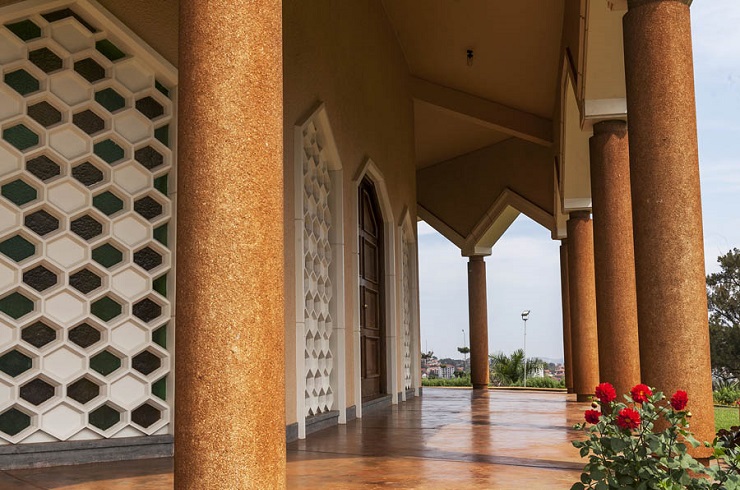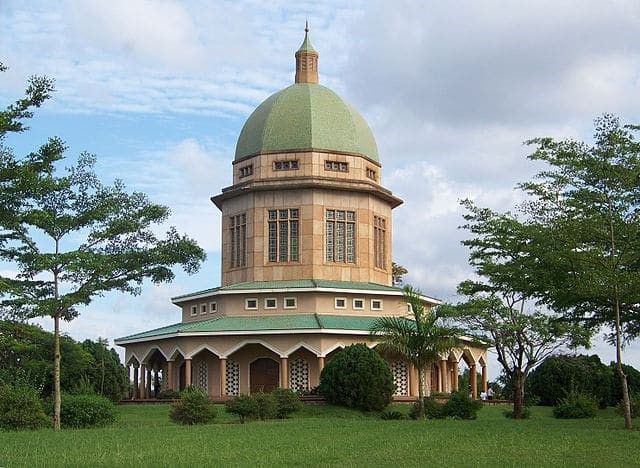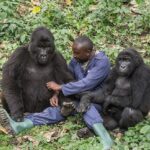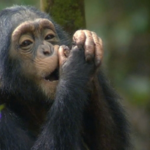Bahai Temple is located on the Kikaya Hill 7 Kilometers from the City Centre along the Kampala- Gayaza Road and It’s the only Baha’i Temple in Africa. The temple is of International significance and attracts the Baha’i community from all over the world.
History Of Baha’i
The Baha’i faith was founded in 1844 by Bahá’u’lláh, born MírzáḤusayn-‘AlíNúrí from Persia, present-day Iran. Baha’ullah means ‘the glory of God’ in Arabic. Baha’ullah, who founded the Baha’i faith,brought about a major change in the thought process of the people across the globe.
The Baha’i faith is all-inclusive and centers on the idea that human rights are a priority in teaching the true values of humanity making it a world religion that has its own laws, sacred writings, and holy day and like every other religion its own calendar.Followers of Bahá’u’lláh are called Baha’i’s. There are eight Bahia Temples in the world with Mother Temple of Africa located in Uganda.
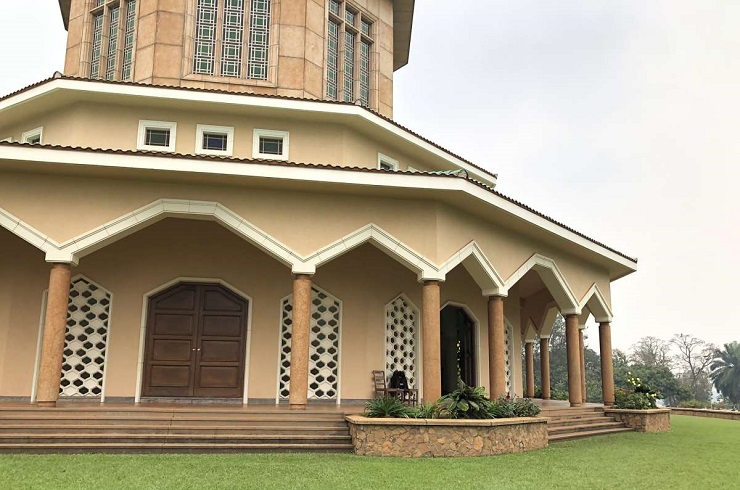
There are large numbers of followers in neighboring countries, including Chad and Kenya, it is not entirely evident why Uganda was chosen as the location for the first African temple. What is known is that English and Iranian followers of the faith arrived in Uganda in 1951 hoping to introduce Baha’i to local citizens.
By 1952, there were over 100 followers of Baha’i in Uganda. The following year, the pioneers left to spread the faith in other parts of the continent. Six years later, the foundation stone was laid for the first and only Mother Temple of Africa, and the Baha’i Intercontinental Conference for Africa was held in Kampala to mark the occasion.
Over half a century after it was founded, the Mother Temple of Africa and it continues to open its doors to thousands of visitors from all walks of life, believers and non-believers alike.
Uganda’s Baha’i Temple is one of only nine temples around the world, the others being in Chile, the USA, Germany, Panama, Samoa, India, Australia and Cambodia.
Baha’i temples around the world are designed in a way that fuses traditional, spiritual and artistic values. Africa’s only temple is modeledas a traditional African hut. The dome-like shape symbolises the divine circle, a reflection of heaven on earth and the spirituality of sacred borders.
Structure of the Bahai Temple

The foundation stone was laid on 26 January 1958 as part of an intercontinental conference that Shoghi Effendi had called. About one thousand Baha’is gathered for the ceremony in which Shoghi Effendi’s widow,Hand of the Cause of God Ruhiyyih Rabbani, and Musa Banani, the first Hand of the Cause of God in Africa, participated.
The building is more than 39 meters highland at the time of construction it was the tallest building in East Africa.It has a circular covered porch on the lowest level providing protection from the seasonal strong winds and heavy rains which is over 100 meters in diameter at the base with the dome composed of lace-like tiles, rises over 37 meters high and is 13 meters in diameter.
The foundation goes 3 meters underground to protect it from possible earthquakes.The green dome that was used in the construction of the Temple made of fixed mosaic tiles was from Italy and the lower roof tiles are from Belgium. The walls of the temple are of precast stone quarried in Uganda.

The colored glass in the wall panels was brought from Germany. The timber used for making the doors and benches was from Uganda.
Bahai Temple was designed by Charles Mason Remey and its foundation stone was laid in January 1958, and the completed Temple was dedicated on January 13, 1961.
Religious Teachings in the Bahai Temple
The Bahai Temple is open to all people regardless of religion, or any other distinction. It brings together different faiths to meet and pray together at the House of Worship.
It is a House of Worship where people of all religions may worship God without denominational restrictions and also meditate.
Every Baha’i temple has a central dome and nine entrances, which suggest that people from various directions gather at a common place to meditate and reflect without an inter-mediation in the form of clergy, sermons and rituals.
Taking a Tour around the Mother Temple will offer you a chance to know what makes the Bahá’í faith unique. Regarding prayers they offer a daily minimum of three mandatory prayers, as written in their holy book of prayer, the Kitáb-i-Aqdas. It was written by the Bahá’í founder Bahá’u’lláh in 1873 and contains the laws by which Bahá’ís must abide.
Only the holy scriptures of the Bahá’í Faith and other religions can be read or chanted inside the House of Worship in any language. Readings and prayers may be set to music by choirs, no musical instruments may be played in the House of Worship and no sermons may be delivered
Bahá’ís do not have a dedicated day of the week, set by holy law, on which to meet. Instead it is up to the Bahá’í community to decide which day is the most convenient for them. In Kampala, followers go to the temple on Sundays. There is no strict attire, either, but believers are expected to dress modestly.
The temple fills to capacity on special days like the Twin Holy Birthdays, two consecutive days commemorating the birth of Bahá’u’lláh and Báb, the most important figures in the Bahá’í faith. These days fall in either October or November.
